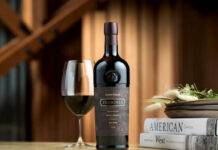Diversity of category can play a key role in driving sales, say producers
With a seemingly limitless number of things to talk about, from cuts and casks to flavour profiles and phenol parts per million, it’s hard to think of a drinks category with more diversity than whisky.
All of this variety could be perplexing to some customers – and even publicans.

But the firms behind some of the best-known whisky brands in the Scottish trade say there are some fairly straightforward ways licensees can make the most of one of the most diverse drinks around.
Jenny Rogerson, marketing manager at Douglas Laing, said that a good whisky menu should “offer an extensive range of both malt and grain whiskies from all of the regions, at various price points all year round”.
If ever there was a spirit with extensive range-building potential, it’s whisky, as Ian Baines, category manager at William Grant & Sons highlighted when he outlined the vastness of the whisky market.
“With the globalisation of the whisky market, the UK is exposed to a wider-than-ever variety of whisky styles, including Japanese, Swedish, and Taiwanese, meaning there is a huge list for consumers to choose from,” said Baines.
Such a broad range could be baffling for some publicans but Euan Mitchell, managing director of Isle of Arran Distillery, encouraged operators to make the most of the resources available – particularly online.
“For inspiration, operators can look to whisky blogs to help with ideas on lesser-known distilleries or limited releases that would be of interest to their consumers,” said Mitchell.
One thing to pay particular attention to is the provenance of a whisky, suggested Mitchell, who said there is currently an “increased consumer demand” for products with a back-story.
“Consumers want products with a story and a guarantee that they’re drinking a spirit that has been made by people who know and care about it,” he said. “A bit of research and care will be noticed, and appreciated by consumers looking for a special dram.”
A big back-bar range can include a variety of whisky styles, but Keith Bonnington of Maxxium UK suggested operators also consider introducing whisky cocktails to further tailor the bar menu to customer preferences.
“Whisky cocktails are a great addition to any menu, particularly when they are in keeping with the season,” said Bonnington.
“Consumers tend to match the sense of occasion with the calibre of drinks they choose to enjoy.
“Cocktails offer party-goers the opportunity to enjoy whisky in new and exciting ways whilst indulging in something luxurious to celebrate with.”
Katy Macanna, UK brand manager at Ian Macleod Distillers, said there are certain things bartenders should bear in mind when creating whisky-based cocktails.
“It is important to note the dominant flavours of a whisky and build on them with a few key ingredients, rather than try and mask them through a lot of conflicting, strong flavours,” she said.
Matching the cocktail to the venue is particularly important, according to Ashley Moore of Diageo.
“Choose a cocktail list that suits your style of outlet and the customers you attract,” said Moore.
“Outlets offering cocktails for the first time should choose a short, well-thought-out list with five to eight cocktails, covering the bestselling cocktails.”
Alistair Mutch, UK sales manager for Tomatin, suggested that one of the main advantages of offering whisky cocktails is “accessing customers who wouldn’t normally choose a whisky drink”.
Offering whisky cocktails isn’t the only way to do this, however, and Mutch said there are several ways operators can get customers to engage with whisky, beyond the traditional malt of the month offer.
“We have seen success by pairing with craft brewers for a ‘half and half pairing’ and other less obvious ways of promoting a whisky could be pairing with a complementary cheese,” said Mutch.



















